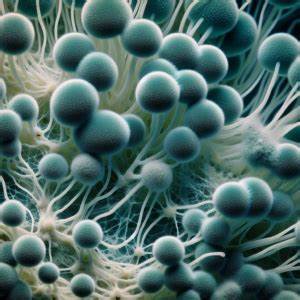The impact of mycotoxins on poultry health and productivity is clear, making mycotoxin management an essential aspect of poultry farming. Given the wide range of potential issues caused by mycotoxins, it is critical for poultry producers to actively manage and control their presence in poultry feed. There are several strategies to control mycotoxins in poultry production:
Good Agricultural Practices (GAP) and Proper Storage
Preventing mycotoxin contamination begins with good agricultural practices (GAP) during the cultivation, harvest, and storage of crops. Ensuring that crops are grown under optimal conditions, free from moisture stress, and harvested at the right time can reduce the risk of fungal contamination. Post-harvest, proper drying and storage of grains are essential to preventing fungal growth and mycotoxin production. Maintaining low moisture levels (generally below 14%) in stored grains is crucial, as moisture levels above this threshold promote the growth of mycotoxin-producing fungi.
Mycotoxin Detection and Monitoring
Monitoring mycotoxin levels in feed is critical to managing the risks associated with their presence. Mycotoxin testing should be a routine part of feed quality control, allowing poultry producers to identify contaminated batches early and take appropriate corrective actions. There are various analytical methods for detecting mycotoxins, including chromatography, immunoassays, and rapid test kits. Early detection enables producers to take corrective measures, such as discarding or diluting contaminated feed, to minimize exposure.
Mycotoxin Detoxification Additives
Given that mycotoxins are often present in poultry feed, even when preventive measures are followed, it is essential to rely on effective mycotoxin solution additives to reduce the impact of these toxins on poultry health. These additives are designed to either neutralize mycotoxins or bind them, preventing their absorption and minimizing their toxic effects. There are several types of mycotoxin solution additives available, each with its mode of action:
-
Mycotoxin Binders: These additives, such as bentonites, zeolites, and activated charcoal, bind mycotoxins in the digestive tract, preventing their absorption into the bloodstream. By binding to the mycotoxins, these products reduce the bioavailability of the toxins and minimize their toxic effects on the bird.
-
Mycotoxin Deactivators: Mycotoxin deactivators work by chemically breaking down the mycotoxins into less toxic or non-toxic compounds. Enzymatic and microbial deactivators are common in this category, as they use specific enzymes or microorganisms to degrade the mycotoxins.
-
Antioxidants: Some mycotoxins, such as aflatoxins, generate oxidative stress in poultry, leading to cellular damage. Antioxidants, like vitamin E and selenium, can help neutralize free radicals and protect the cells from oxidative damage caused by mycotoxins.
-
Immune Modulators: Some mycotoxin solution additives are designed to enhance the poultry's immune response, helping to counteract the immunosuppressive effects of mycotoxins. These additives can include vitamins, minerals, and plant extracts that boost immunity and reduce the risk of secondary infections.

